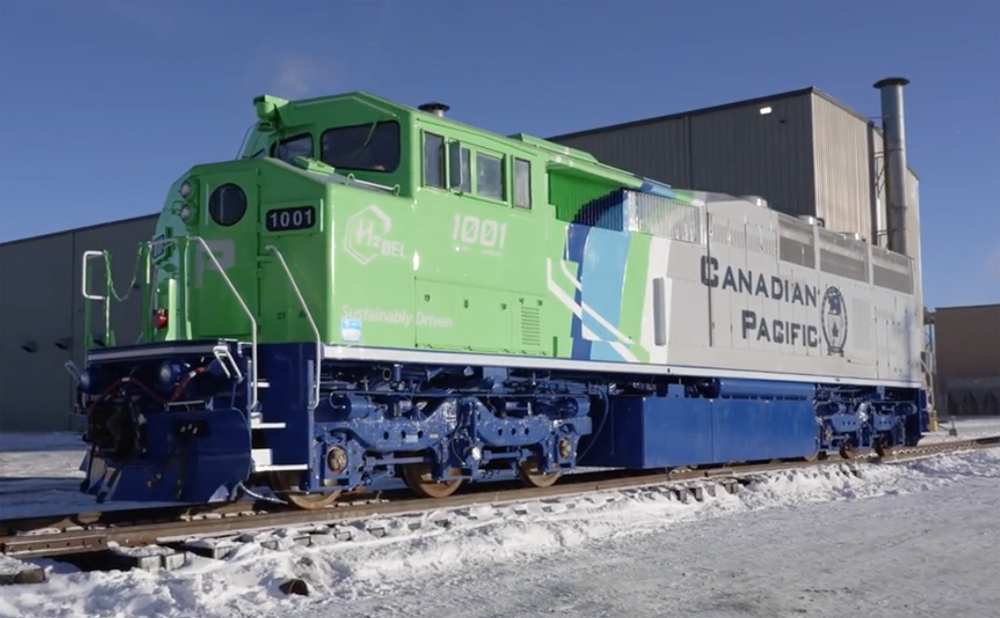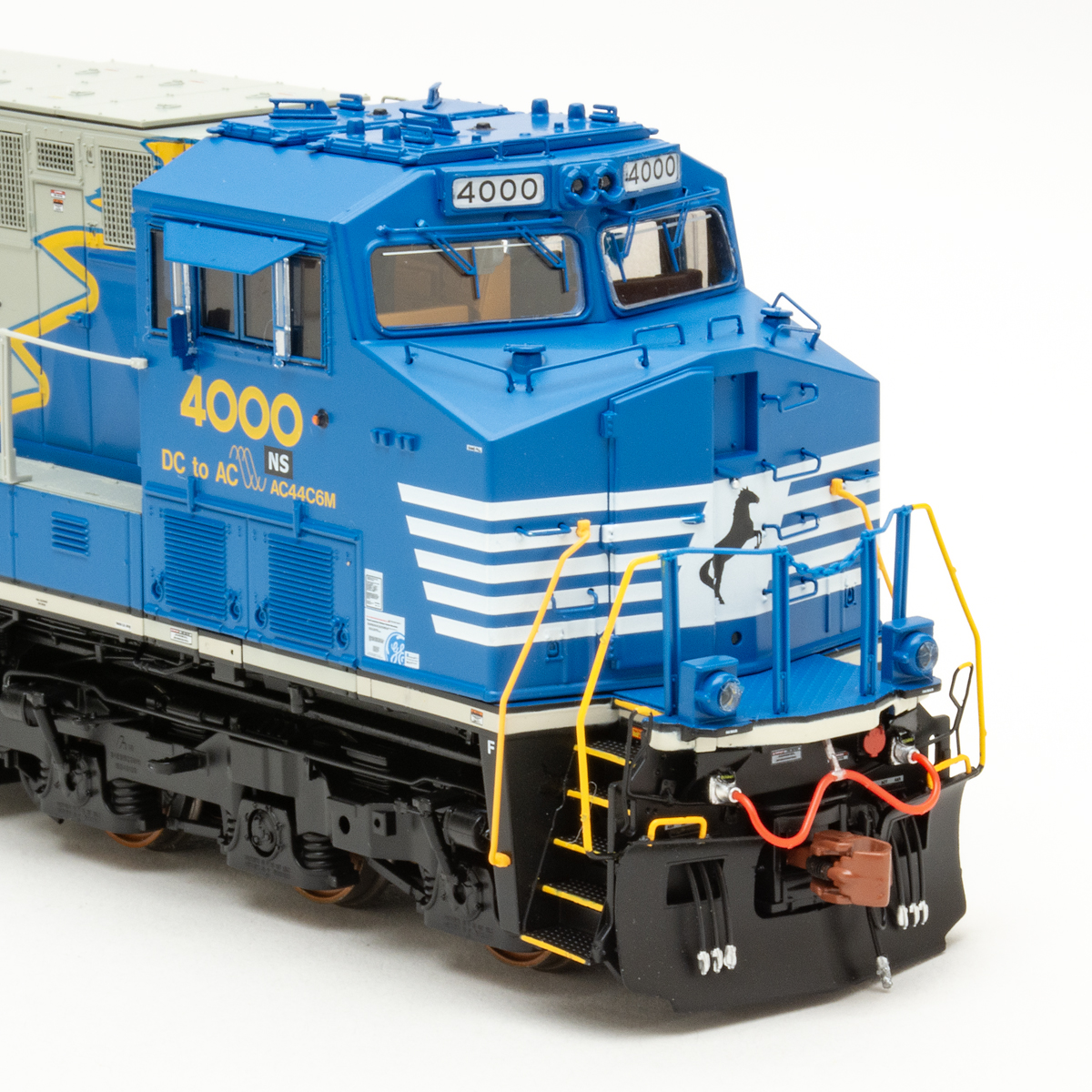
CALGARY — Canadian Pacific has released a short video on its social media channels showing the first of its three hydrogen fuel-cell locomotives converted from diesels. You can see it here on Facebook, and here on Twitter. The railroad says the locomotive, built from a former SD40-2F and dubbed the H20EL (for “Hydrogen Zero-Emissions Locomotive”) has operated under its own power. CP launched the hydrogen program in late 2020 [see “Canadian Pacific announces plan …,” Trains News Wire, Dec. 18, 2020], and announced last November that it would be expanded to three units with the help of a grant from Emissions Reduction Alberta [see “CP to build additional hydrogen locomotives …,” News Wire, Nov. 1, 2021].














Bruce I think It will Be cheaper till these companies get there foot in the door. If the railroads start getting a fleet of them the price will go UP. It’s one of those things Hey you guys got a lot of those hydrogen locomotives an if you want to run them pay us!
Is it worth all the expense? Cars retrofitted to burn on hydrogen have not caught on.
In order to be cost effective, it must not only be lower in emissions, in this case very low, and it must be cheaper to operate.
I read that two hydrogen production facilities will be used during the trial. One will create hydrogen from natural gas (Calgary) and the other from water (Edmonton). The energy companies are keen to develop a market for hydrogen derived from natural gas which can have low carbon dioxide emissions if the unwanted byproduct is stored underground. Empty oil reservoirs offer a ready made location and Alberta has plenty of them.
Alberta power comes primarily from natural gas and coal plants so using electricity from these sources to create hydrogen doesn’t seem to make much sense. As more wind farm electricity comes online using water to generate hydrogen makes more sense particularly if using excess energy from off-peak periods is practical.
In the USA 97% of hydrogen comes from — Natural Gas! So a hydrogen locomotive moves, but the does eliminate, the emissions!
How are they obtaining Hydrogen?